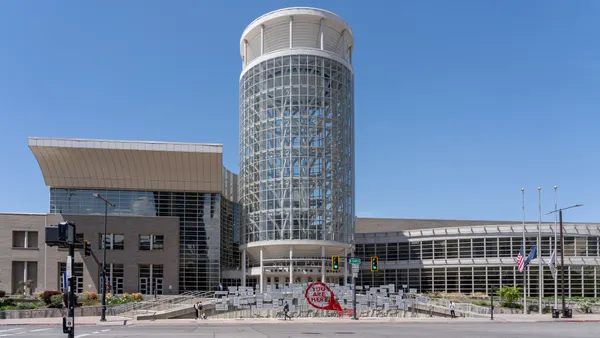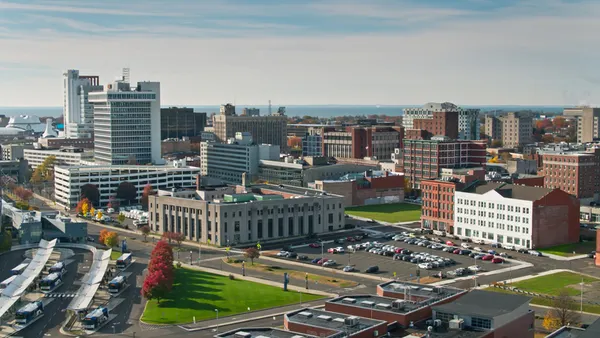The United States faces a national housing shortage. Unaffordability is skyrocketing, and last year saw the largest rate of homelessness ever recorded.
Some housing advocates credit the problem to a lack of “middle” housing — multifamily options such as duplexes, fourplexes, townhomes and small single-unit dwellings that fall between the more dominant single-family homes and large-scale apartment buildings.
In a three-part series, the Joint Center for Housing Studies at Harvard University is examining the absence of so-called “missing middle” housing in an area where its loss is acutely felt: Massachusetts, which needs to build 222,000 homes in the next 10 years to meet demand. The share of missing middle housing in the state is 26%, compared to 51% for single-family detached homes.
JCHS has published two of the three reports, with the third scheduled for October. Here are five takeaways from the study so far.
1. Missing middle housing has a storied history in the state.
The “triple-decker” — a housing type consisting of three stacked apartments — was once a staple of Massachusetts’ housing landscape. “Quintessentially missing middle,” triple-decker construction boomed beginning in the late 19th century, housing the state’s growing immigrant and working classes. The housing represented “a path to homeownership, income-generating potential, and multigenerational family living,” the report states. But by the mid-20th century, construction of missing middle housing such as triple-deckers largely came to a halt due to a wave of new regulatory barriers.
2. Zoning is the primary barrier to missing middle housing.
Missing middle housing construction “largely stopped being built because it was made illegal,” according to the report. Automobiles altered housing development patterns in the state, and zoning regulations sprouted to favor detached single-family homes and muscle out middle housing types. Zoning requirements such as parking minimums and minimum lot sizes “have been wielded as weapons to limit overall housing production, as well as what type of homes can be built, and where,” the report states.
3. But zoning isn’t the only barrier.
Construction costs are another major impediment to missing middle housing in Massachusetts. With high rates for labor and materials, the time and effort to build smaller scale projects is less lucrative for developers. Massachusetts’ strict building codes — which dictate all three-unit buildings need sprinklers and structures above three stories need two separate staircases, or egresses — also discourage construction of missing middle homes.
4. Middle housing benefits go beyond adding housing stock.
Increasing missing middle housing in the state opens myriad economic development opportunities, according to the report. Other benefits include more walkable neighborhoods, which are in demand and can help boost a local economy, as well as increased income opportunities for owners who purchase smaller units and rent one or two out. Legalization of missing middle housing in the state could also spur a new generation of smaller-scale home builders, the report notes.
5. Six main categories are recommended for regulatory reform.
JCHS’s second report in the series examines the policy changes that would need to take place to boost missing middle housing in Massachusetts. The recommended reforms include:
- Legalizing missing middle housing types in all residential areas.
- Removing or decreasing residential parking minimums.
- Reducing minimum lot sizes.
- Increasing lot coverage and reducing setback restrictions.
- Streamlining the development review process.
- Reforming building codes that limit missing middle housing.
The Trump administration’s One Big Beautiful Bill Act expands a Low-Income Housing Tax Credit program that experts say could spur more affordable housing construction in the U.S.













